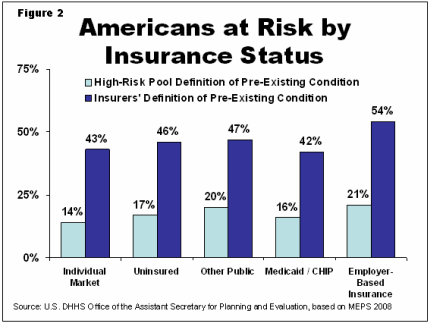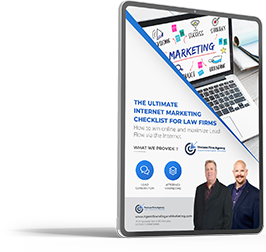
High-risk insurance customers are underserved. Many, no doubt, could benefit from your insurance agent services. Several major insurers offer policies in this category. However, for many people, finding the most suitable policies, at the best prices, is fairly complicated. Large swaths of people looking for insurance find themselves in a world of complicated policies and outright refusals.
If you want to add more customers to your book, and who doesn’t, you should consider expanding your services to meet the needs of some in the high-risk market. This often overlooked group holds numerous possibilities for the diligent insurance agent. Here, just like their less-risky counterparts, people need advice on everything from homeowner’s insurance to business insurance. No doubt, you can offer tremendous value to these customers.
Taking advantage of these opportunities requires you to first identify high-risk prospects, then to demonstrate why your agency is ideal for serving their needs. That is not as complicated as it may sound. In this article, we will have a look at the following:
– The potential within the high-risk, or non-standard, market
– Why people fall into the high-risk insurance category
– Why you should sign high-risk customers
– How to target non-standard prospects
Why Target High-Risk Insurance Customers

A person’s credit history, their occupation, and the
Then, consider findings from the New York City Traffic study that says, “80% of all auto accidents that kill or seriously injure pedestrians involve male drivers.” When paired, these statistics demonstrate how a large group of young men can find themselves classified as high-risk for auto insurance before they even request a quote.
We can find similar statistics across all categories of insurance. It’s a harrowing fact, but many people end up being considered high-risk for no other reason than being associated with a particularly high-risk group. In addition to that, there are people who require certain types of insurance which are inherently high-risk. There is no such thing as a standard policy for wildfire, flood, and earthquake insurance for example.

There is a multitude of factors outside of a person’s control that determines their ability to obtain insurance. In addition, the kind of insurance the person needs also comes into play. For example, listing diabetes on an application would not have a great impact on someone’s ability to get auto insurance. But, that would be a big factor in an application for life insurance. Likewise, getting a ticket for a traffic
A person might be non-standard in one category of insurance and standard in another. That fact often leads to much confusion amongst people who do not know the ins-and-outs of insurance. The crossover might well mean you have customers who got insurance with ease for one area of their life, but now they are coming to you as a high-risk customer for other types of coverage.
I mention this point because it is not useful to view the “high-risk” insurance market as just that. Prospects here have different needs and may fall into multiple categories.
As insurance agents, targeting such prospects has both ethical and financial advantages. No doubt you take pride in helping your customers find the most suitable insurance policies. High-risk customers can require more care and attention than ordinary patrons.
If helping people get the right insurance coverage is your primary objective, targeting high-risk insurance customers is certainly a worthwhile
Common Reason People are Considered High Risk
There is a multitude of reasons why someone trying to obtain insurance might be thought of as “high-risk. Let’s look at some of the most common reasons. For clarity’s sake, it is best to break these down into types of insurance.
High Risk for Health Insurance Examples
* Heart disease
* High cholesterol
* Obesity
* Diabetes
* Smoking
The examples above might impact a person’s ability to get certain types of insurance, but if they already have a policy, health and medical history should not affect their premiums. Only five factors should affect premiums:
* Changing plan category
* Adding family members to the plan
* Tobacco use
* Location
* Age
High Risk for Auto Insurance Examples
* Ownership of high-powered vehicle
* Traffic violations
* Conviction for driving under the influence
* Causing a traffic accident
* Inexperienced driver
Auto insurers do not all conduct the same underwriting processes. As a result, one insurer might consider an individual high-risk, and another insurer might not. Furthermore, all states in the U.S. have implemented systems that help give car insurance to those who can’t get it through standard means. The scheme is called “assigned risk plans, and it means you will always have options to offer your auto customers.
High-Risk Home Insurance
* Disaster-prone location
* High crime
* Multiple insurance claims
* Mobile home
Homeowners insurance is probably one of the most complex types of high-risk categories. That’s because of all the different factors that must be considered in the application and underwriting process. Things like
Even those considered low-risk might have difficulty assessing their coverage needs. With high-risk customers, greater care will need to be taken in both assessment and insurer matching.
High-Risk Workers Compensation Insurance
* Construction industry
* Contract workers
* Equipment
* Working in war zones
* Trucking
Rules, rates, and underwriting process vary between states. The laws and regulations are established at the state level, so it is more important than ever to address customers on an individual basis in this high-risk category.
Independent resources, such as Moody’s Risk Analysis, are used to calculate multiple data sets to help insurers predict people’s
With all of that in mind, the potential to serve a huge base of customers should be evident. In health insurance alone, some 50% of the population is considered high risk due to pre-existing medical conditions, according to a Time.com article – and that’s just the “non-elderly” population.
So, now that you can identify these prospects, how do you go on to sign those high-risk insurance customers?
Website and Search

These days, almost everything revolves around the internet. As a result, marketing to most groups of people starts online. Every day, millions of people are searching for solutions to their insurance problems. Perhaps they were denied by an insurer, or maybe their policy was just cancelled. Whatever the reason, they go online to seek answers and solutions.
They find those answers via
To improve your chances of attracting high-risk prospects, you must first anticipate the searcher’s intent. In doing so, you can take steps to answer their queries and offer solutions preemptively. Going online means creating content. Now, creating content as an insurance agent is fraught with nuances. You must ensure that you remain compliant and that you have permission from your parent company if you are a captive agent.
Whether you’re captive, or non-captive, you also need to ensure you’re in compliance with your state D.O.I. with regard to publishing your own content, e.g, Infographics, blog, video, etc.

Source: BrightLocal – https://www.brightlocal.com/learn/local-consumer-review-survey/
With that said, content does not have to be extravagant. Simply addressing questions on social media, in reputable forums, and via business directories such as Yelp can be enough to enhance your brand and expose your agency to the prospects you want. At the very least, however, you should have a website that is
The process of
Paid Advertising

Many people mistakenly believe that they can get free advertising on the internet. It’s true that in the early years of the internet, success could be achieved with minimum time and monetary investment. That is not the case today, however. Platforms such as Facebook, once glorified by marketers for the ability to gain brand exposure for free, have now become pay-to-play
Paying for customers is nothing new. This is just the internet falling in line with the way things have been done for over 100 years. As long as there have been media, there have been businesses paying for a piece of the audience’s attention. There are some significant differences between paying for customers online and other mediums such television and radio, though. One of those differences is the cost. Compared to other forms of advertising, social and pay-per-click advertising are relatively cheap.
Then there is the ability to advertise to a specific audience. Aside from obvious cost benefits, the fact that you can create more targetable ad campaigns online means much less ad spend is wasted on people who have no interest in what you have to offer. That makes online advertising highly cost effective. Online’s targeting capabilities are second to none. In fact, Google and Facebook are extremely adept at giving you numerous and precise options to reach your intended audience.
It is also a quick way to gain exposure. As soon as your ads go live, it’s possible that you could start getting leads (phones calls or online quotes). As opposed to search engine
The more

Source: Nueta Ventures – http://nuetaventures.com/2014/12/29/infographic-how-should-you-target-your-facebook-ads/
Conversion-Ready Website and Outreach-Happy Team

Both SEO and PPC address many of your marketing needs including lead generation. But what happens when they end up on your website or contacts your agency? Do you have the right systems in place to onboard new customers? If the aim of your marketing campaign is to direct people to your website, you must ensure that the site does a good job of letting people know what to do next.
Your website needs to provide more information, instil visitors with trust, and guide them towards taking the next step – be that booking an appointment, giving you a call, or leaving you their contact details. That means you must have a website that is easy to navigate and contains compelling content. Compliance is, of course, key. But within the boundaries of the rules, you must ensure that your website does an effective job of selling your services.
Another objective of your marketing campaign might be to have prospects contact you directly, bypassing the website altogether. That is a desirable objective for agents who do not have the freedom to create their own full-blown websites.
Getting people who are searching online to take an offline action is not always easy, but it comes down to one key component; the call to action (CTA). Every campaign should have a compelling CTA. Your call to action should answer the inevitable questions that people will have after seeing your ad or other content: “What should I do next?” “What will I get?” “Is this worthwhile?”
Position your CTA so that it is appealing and highly beneficial to your prospect, and they will be willing to do whatever is necessary to find out more – including calling you on the phone or visiting your office.
Conclusion
High-risk insurance customers are like other customers in many respects. They all just want to find the best insurance coverage for their circumstances and budget. Expanding your services, to include helping high-risk individuals and businesses, can help to diversify and grow your book beyond what you thought was imaginable.






